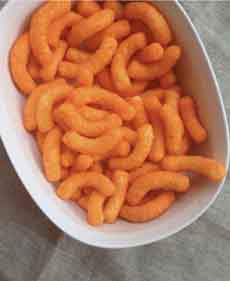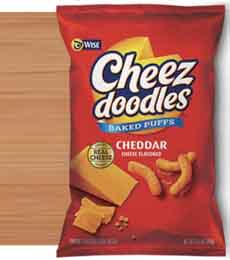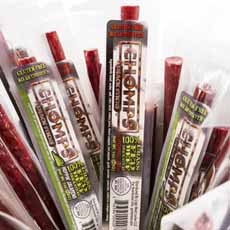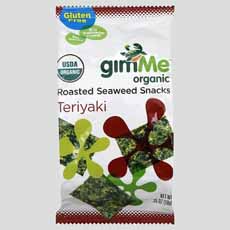|

[1] It’s National Peanut Butter Lovers Day. Enjoy peanut butter straight from the jar or in a recipe like these spicy Thai peanut noodles. The recipe is below (photo © Sable & Rosenfield).

[2] Enjoy peanut butter straight from the jar (photo © Jif).

[3] Celebrate by trying a new brand of artisan peanut butter (photo © Once Again Peanut Butter).

[4] Rice noodles—they’re gluten-free (photo © Sunbasket).
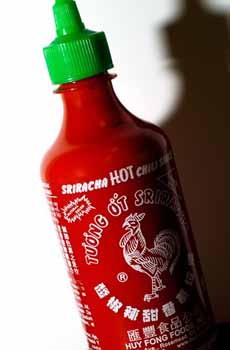
[5] Sriracha, Thai hot sauce (photo © Team Liquid).
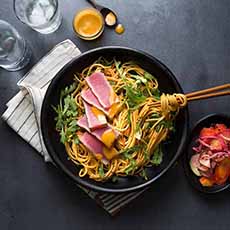
[6] You can top sesame noodles with seared tuna, grilled lamb, pork or poultry.
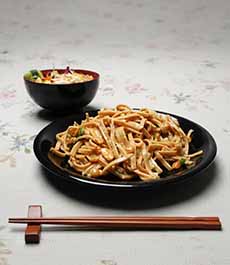
[7] Japanese sesame noodles, goma dare udon (photo © Daniel West | SXC | Free Images).
|
|
Once Again is a line of artisan nut butters that are organic and non-GMO. Located in a small rural community in western New York, it is a good corporate citizen: 100% employee-owned and philanthropic. The company donates to more than 100 charities each year. The product line includes:
Almond Butter
Cashew Butter
Peanut Butter
Sunflower Seed Butter
Chocolate Hazelnut Butter
Packaged Nuts
Honey
Within the nut butter category, there are sizes from snack packs to 9-pound tubs, along with the popular 12-ounce and 16-ounce jars.
> The recipe for Thai Sesame Noodles is below.
> The history of sesame noodles is also below.
> Here’s the history of peanut butter.
> The history of noodles/pasta. (National Noodle Day is October 6th.)
> The year’s 12 peanut butter holidays
> The year’s 20 pasta holidays. National Noodle Day is October 6th.
EVERY TYPE OF PB
Because March 1st is National Peanut Butter Lovers Day, we’re going to home in on that product line. There’s everything a PB-lover could want:
American Classic Crunchy No-Stir Organic Peanut Butter
American Classic Creamy No-Stir Organic Peanut Butter
Old Fashioned Natural Creamy No Salt Peanut Butter
Old Fashioned Lightly Salted Natural Crunchy Peanut Butter
Old Fashioned Natural Crunchy No Salt Peanut Butter
Old Fashioned Lightly Salted Creamy Natural Peanut Butter
Organic Lightly Salted Natural Crunchy Peanut Butter
Organic Crunchy No Salt Peanut Butter
Organic Creamy Lightly Salted Peanut Butter
Organic Creamy No Salt Peanut Butter
Wow, that’s a large menu of choices.
DIFFERENT WAYS TO USE PB
All those PB choices got us to thinking about cooking with peanut butter, beyond dipping sauce/peanut sauce, sandwiches/wraps/lettuce cups, and sweets (brownies, cake, cookies, fudge, ice cream, pies, pudding, etc.).
Bacon burgers condiment, other burgers and sliders
Energy bars and protein balls
Marinade (coconut milk, Greek yogurt, peanut butter)
Oatmeal and pancakes
Peanut butter chili (recipe)
Peanut soup (recipe)
Satay, kabobs and other chicken, fish and pork recipes
Shakes and smoothies
Stews
Thai pizza
Vinaigrette (rice vinegar, peanut butter, oil, sriracha)
Yogurt, yogurt dip
RECIPE: SPICY THAI PEANUT NOODLES
Thanks to Once Again Peanut Butter for this yummy recipe.
The difference between Thai and Chinese Szechuan sesame noodle dishes is primarily the noodles. The Thai dish uses rice noodles, and the Chinese dish uses wheat noodles (like linguine).
The Thai recipe also has more vegetables and uses (not surprisingly) Thai flavors like cilantro, sweet chile sauce, lime juice, and rice vinegar.
Sesame noodles are also a popular Chinese dish. Check out the year’s 17 Chinese food holidays.
Ingredients For 4 Servings
1/2 cup creamy peanut butter
1/2 cup fresh cilantro, chopped
1/4 cup warm water
1/4 cup sweet chili sauce
1/4 cup fresh lime juice
2 tablespoons rice vinegar
1 tablespoon dark brown sugar
1 tablespoon fresh ginger peeled and minced
2 teaspoons soy sauce
2 teaspoons sesame oil
2 teaspoons sriracha
1 clove garlic chopped
1 8-ounce box or bag pad Thai rice noodles
1 cup carrots, julienned or shredded
1 cup red bell peppers, julienned
1 cup snow peas, julienned
2 tablespoons vegetable oil
Garnish 1 lime wedge
Optional garnish: chopped scallions, julienned basil leaves
Preparation
1. PLACE the peanut butter, cilantro, water, sweet chili sauce, lime juice, rice vinegar, sugar, ginger, soy sauce, sesame oil, hot chili sauce, and garlic in a blender. Purée until smooth. Set aside.
2. HEAT the vegetable oil over medium-high heat. Add the vegetables, season lightly if desired, and sauté for 3-4 minutes, until the vegetables have softened but still maintain some crunch. Set aside.
3. COOK the noodles in simmering salted water for 1-2 minutes. Note that rice noodles cook very quickly. Drain the noodles and place them back in the pot. Toss with the peanut sauce.
4. SERVE: Arrange the noodles in a shallow bowl or on a plate. Top with a large scoop of vegetables. Garnish with a lime wedge and basil.
|

[7] Sesame noodles (photo © Enginak Yurt | Pexels).
THE HISTORY OF SESAME NOODLES
Sesame noodles, as we know them today, are often associated with Chinese cuisine, particularly dishes from northern China, where sesame seeds and sesame oil have been used for thousands of years.
The use of sesame paste (zhī ma jiàng, similar to tahini but made from roasted sesame seeds for a deeper, nuttier flavor) or sesame oil in noodle dishes is a hallmark of Chinese culinary traditions, especially in regions like Beijing and Sichuan.
In modern China, they’re a popular dish that combines sesame paste, soy sauce, vinegar, and chili oil. Recipes vary among regions (as they do just about everywhere). For example, in Sichuan the sesame noodles, served cold (or room temperature), often have a spicy kick.
(Hot or cold, we especially enjoy them with a generous garnish of sliced scallions, sesame seeds, and chopped peanuts [sometimes honey roasted].)
The Beginning
Sesame seeds were introduced to China from Central Asia or India via the Silk Road, likely during the Han Dynasty (206 B.C.E–220 C.E.). They became a staple ingredient in Chinese cooking, valued for their nutty flavor and versatility.
Sesame oil, made from roasted sesame seeds, became a key ingredient in Chinese cuisine, especially in northern China, where it was used to flavor cold dishes, noodles, and dumplings.
That’s why food historians credit the origin of sesame noodles to northern China, where wheat-based noodles are a dietary staple. The cold sesame noodle dish, often served with a rich sesame paste sauce, became popular as a refreshing and flavorful meal, especially in the hot summer months.
In Sichuan cuisine, sesame noodles evolved to include bold flavors like chili oil, garlic, and Sichuan peppercorns. This variation, often called Sichuan cold noodles (liáng miàn), became a classic street food dish. The combination of sesame paste, soy sauce, vinegar, and chili oil created a balance of nutty, savory, tangy, and spicy flavors.
Variations of sesame-flavored noodle dishes can be found in other parts of Asia.
Japan: Sesame seeds and sesame oil were introduced to Japan from China, and Japanese cuisine developed its own sesame-based dishes. While not identical to Chinese sesame noodles, dishes like goma dare udon (cold udon noodles with sesame sauce) reflect the influence of Chinese sesame-based sauces. Japanese sesame sauces are often lighter and sweeter, incorporating ingredients like Japanese ingredients mirin, a sweet, low-alcohol Japanese rice wine, and dashi (a broth of kombu—kelp).
Korea: While Korea doesn’t have a related dish, sesame oil is a key ingredient in noodle dishes like bibim guksu (spicy mixed noodles).
such as Japan and Korea, where sesame seeds and sesame oil are widely used in cooking. Japanese sesame noodles like goma dare udon, for example often use a lighter sesame sauce. The Korean version is bibim guksu.
Thailand: Thai sesame noodles are a fusion dish that blends Chinese sesame noodles with Thai accents, such as lime juice, fish sauce, chili paste (e.g. sriracha), fresh cilantro and mint, which are not found in traditional Chinese sesame noodles. Instead of traditional Thai rice noodles, Chinese wheat noodles are used. Instead of the Chinese sesame paste zhī ma jiàng, Thai sesame noodles often use peanut butter, reflecting the popularity of peanuts in Thai cuisine.
Chinese-American Cuisine: Sesame noodles gained popularity in the West through Chinese-American restaurants, particularly in the mid-20th century. As with many dishes, they were often adapted to suit Western palates, with a sweeter and less spicy flavor profile. (Editor’s complaint: In some restaurants we’ve been served what amounted to spaghetti with bland, diluted peanut butter.)
Sesame noodles have become a global dish, with countless variations influenced by different cuisines. Some recipes incorporate tahini instead of Chinese sesame paste, or add ingredients like peanut butter, lime juice, or fresh herbs for a fusion twist.
It’s easy to make your own peanut sauce at home, with just peanut butter, sesame oil, and soy sauce, with sugar or honey to taste. Then, just boil a pot of pasta!
|
